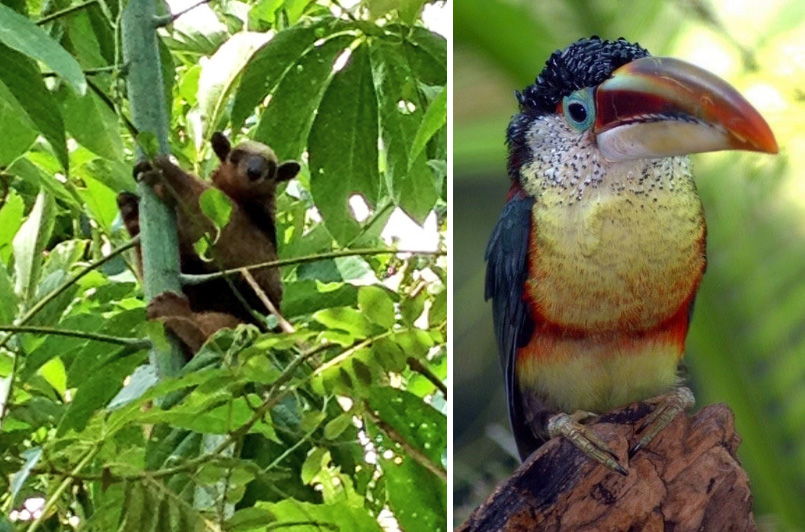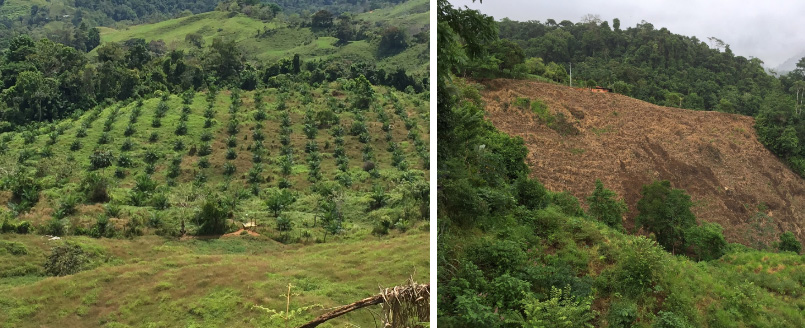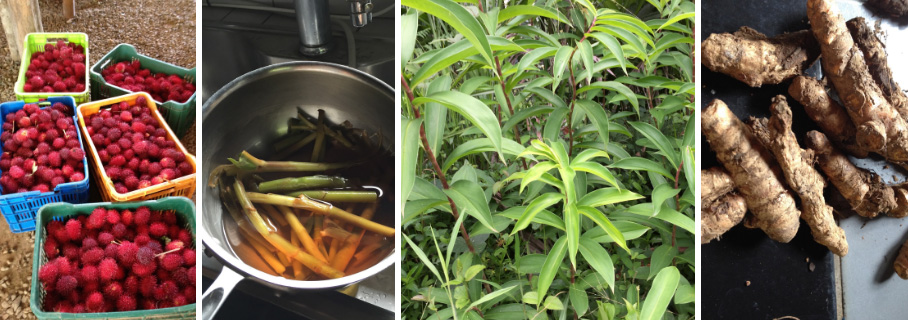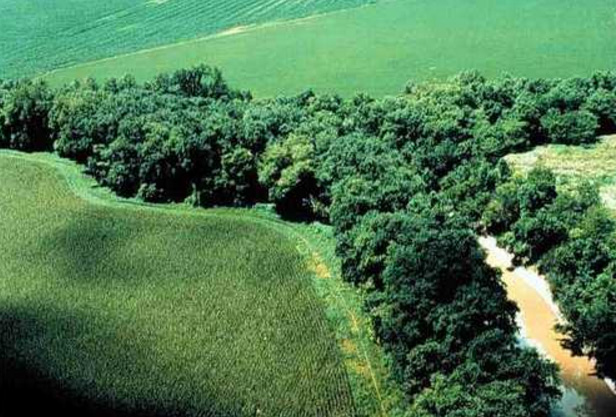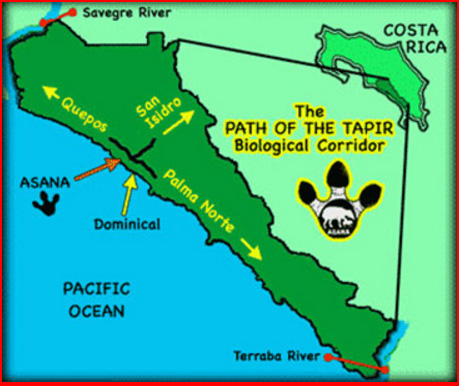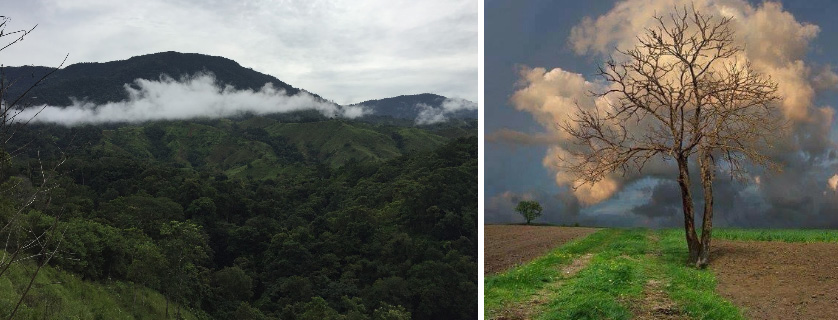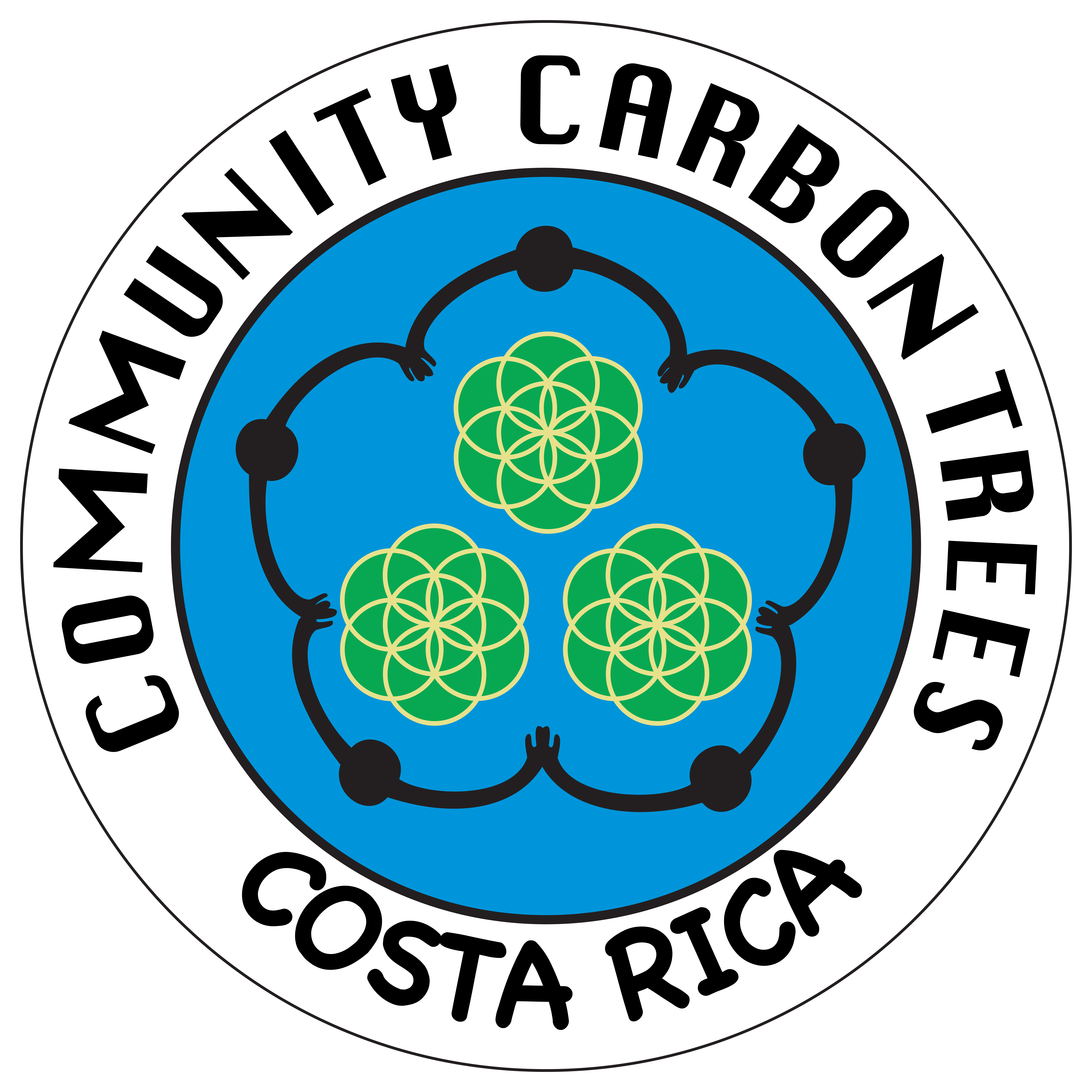

Wildlife Corridors
Get connected to your local Wildlife Biological Corridor "and the bigger picture"
A web of interconnected life thrives in these Costa Rican jungles, rivers, beaches and oceans. But what about the islands of jungle surrounded by cattle farms? What about the animals which need expansive wild spaces to survive like the Tapir or the Jaguar? What about the rivers and water springs evaporating in the summer sun, not a tree in sight? Do these local environmental questions even matter in the big (or little) scheme of things?
Let's talk about what biological corridors mean to you. Why are tropical biological corridors important to the world at large? Did you know that you can participate more fully in local and international biological corridors at work to preserve species of animals and plants in Pacific Southern Zone of Costa Rica. If you care about wildlife, then it makes sense to care about their habitats. Wildlife cannot exist without connected healthy habitats full of food and water. Help us plant more trees to give animals all through the food chain a fighting chain. We are the top of the food chain and our own survival is dependent on the well being of every single creature from fungi to insects to snakes and jaguars.
ACCT has been planting toward the goal of uniting natural habitats along the southern Pacific coast of Costa Rica between the Savegre River and the Terraba River and their tributaries. While uniting this region with the larger Mesoamerican Biological Corridor originating in Mexico, it establishes an extensive, unified natural habitat of tropical primary rainforests, mangroves, secondary rainforests in varying stages of regeneration and reforested areas stretching along Costa Rica's central and southern Pacific coast to the protected areas of the OSA Peninsula. Everyone hopes that creation of this extensive, connected habitat will encourage the elusive tapir and many other seemingly lost or endangered species to thrive once again in the region for generations to come.
Experts generally agree that on a planetary basis, the number one cause of extinction is habitat destruction or degradation. This is true because the decimation of ecosystems of plants, animals, fungi and bacteria brings with it other detrimental forces such as alien species and human hunters which more easily penetrate the interiors of remaining areas, pollution which reaches closer to core populations and disease which attacks the survivors. Substantial reductions in habitat area, many beyond 90 percent, have already occurred in numerous places around the world. Recent studies show that habitat destruction unfortunately tends to be concentrated in those regions where biodiversity is most rich. According to Edward O. Wilson, renowned conservation biologist and two-time Pulitzer prize winning author of The Diversity of Life, "the relation between shrinkage of habitat area and the loss of species, either through reduction of populations to critically endangered levels or outright extinction, has been well substantiated in many studies on the effects of deforestation and other habitat conversion."
This effect is not due solely to the loss of living space. Fragmentation of forest alone - breaking available space into pieces - has its own impact, by increasing the length of the edge of the habitat patches relative to their area. This changes the physical environment of the remaining forest at least 100 meters inward from the edge. Remaining trees are vulnerable to drying and wind damage. Trees become more fragile and lose their biomass and deep forest plant and animal species disappear.
Overcoming Species Loss Denial
People tend to react to the evidences of species extinction with varying stages of denial. Here are some commonly heard quips. "Extinction is natural" or "species have been dying for more than 3.5 billion years with no permanent harm to the biosphere." People argue, "Evolution has always replaced extinct species with new ones."
These half-truths, however, conceal a terrible twist. As pointed out by Edward O. Wilson, after each of the five greatest extinction spasms spaced over 400 million years at roughly 100 million year intervals, evolution required about 10 million years to restore the pre-disaster levels of diversity. This is an extremely long time for future generations to wait because of the damage we are inflicting on the environment within a few decades. Equally serious, the biosphere cannot "recover" as in previous ages if natural environments have been crowded out by artificial ones.
In another stage of denial, people ask, "Why do we need so many species anyway? Who cares about all these bugs, weeds and fungi?" We should care. Scientific studies support the conclusion that the more species living in an ecosystem, the higher its productivity and the greater its ability to withstand drought and other kinds of environmental stress. We depend on the abundance of functioning ecosystems, including all the creepy crawlies, to purify our water, enrich our soil, and manufacture clean air to breathe. Moreover, wild species, some of which are still unknown, are the source of new pharmaceuticals, crops, fibers and other products which help to sustain our lives.
The clinching argument for the protection of species, however, may in the end prove to be a moral one. Who are we to destroy the planet's Creation? Each species around us is a masterpiece of evolution, uniquely adapted to its environment. Species living today are thousands to millions of years old, their genes having been tested by adversity over countless generations. Homo sapiens, or humans, in large part, fail to live in harmony with the natural world we inherited, ever trying to dominate it and break the cycle of life. Without drastic changes, we may succeed beyond our worst nightmares.
What Are Wildlife Corridors?
Biological corridors connect separated patches of rainforest. They create biological pathways that prevent wildlife from becoming stranded in isolated patches of forest that do not provide enough resources. Jungle felines and large mammals need at least a 50 square mile radius intact of jungle habitat in order to survive. They find themselves at great risk when they are forced into areas inhabited by humans. Connecting protected areas of wild habitat contributes directly to the conservation of biodiversity by providing sufficient and varied zones required for the survival of species, including rare and threatened ones.
A forest wildlife corridor hugs the banks of a river as it winds through farmland. (Photo By U.S. Department of Agriculture - Public Domain)
Biological Corridors in Costa Rica work to preserve water and biodiversity of species of flora and fauna.
On the Central to Southern Pacific coast of Costa Rica, The Path of the Tapir Biological Corridor was created by ASANA in 1996 and later made part of the MesoAmerican Biological Corridor in 2000 with support from The Nature Conservancy's technical study. The Corridor re-establishes the migratory routes between the jungles of the Osa Peninsula and the Talamanca mountain range and includes the Fila Costena, the Reserva Forestal Los Santos, and the National Park Tapanti-Macizo de la Muerte.
Importance of tropical Rainforests
Although tropical forests only occupy 7% of the total landmass on Earth, they are home to more than 2/3 of all the world's plant and animal species (XI World Forestry Congress). Deforestation in tropical forests is the greatest threat to extinction of species. (Whitmore and Sayer, 1992). Although it is impossible to accurately determine due to our limited knowledge of tropical ecosystems and inadequate monitoring systems, some estimates put the annual loss of both plants and animals at 50,000 species each year.
In addition to wood products which we use in countless ways throughout daily life, including lumber, panels, posts, poles, pulp and paper, the tropical forests serve as reservoirs of germplasm for plant-improvement breeding opportunities. Rainforests also supply a host of medicinal plants for our well-being and new sources of pharmaceuticals to fight disease. Other forest products include fibres, resins, natural medicines, latexes, and fruits. Loss of this resource, therefore, presents serious biological and economic consequences and represents the most profound environmental tragedy of our time.
Moreover, the tropical rainforests are critical to helping maintain balance in the composition of gases in the atmosphere and regulating global temperatures through photosynthesis, production of oxygen and sequestration of carbon dioxide. Planting trees in any clime is beneficial and beautiful for all the gifts they give us daily. But did you know that planting trees near the Equator "cools" the planet more than trees planted in North America, or Canada, or Norway? Scientists from the International Panel on Climate Change have focused in on tropical trees as the key to solving so many of the environmental challenges we face as a world community.
Learn more about how tropical trees are a climate change solution.







